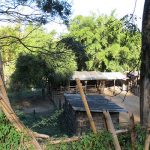Urbanization of Precarious Settlements
Turning precarious settlements into cities is a challenge that must be faced in the new millennium. IEME Brazil participates in projects that transform precarious occupations into neighborhoods in urbanistic projects, in order to integrate them to the rest of the city.
The processes that make possible this result is complex and require a precise conception of urbanization techniques in favelas and a methodology that is structured in the knowledge of each one.
METHODOLOGY
- Registration and realization of socioeconomic and organizational research of families
- Reading sociability networks and understanding local dynamics in their relationship with the environment
- Identification of leaders
- Rescue of the history of the place and forms of social organization
- Survey of the physical conditions of the land on which the occupation is based
- Survey and analysis of the land situation
- Survey and analysis of existing risk situations
- Survey and analysis of the urban situation of the settlement, including accessibility and presence of community equipment
- Survey and analysis of the existing infrastructure situation and conditions for its installation
- Quantification of households to be removed and definition of alternatives for resettlement of families
- Definition of urban planning guidelines for intervention
- Elaboration of basic and executive projects of urbanization and infrastructure
- Execution and management of works
- Routing of land regularization actions in parallel with urbanization processes
- Monitoring and evaluation of processes
BENEFITS OF URBANIZATION OF PRECARIOUS SETTLEMENTS
Precarious settlements are areas traditionally excluded from the formal territories of cities. In general, they shelter the most vulnerable population, concentrating the worst social indicators, reflected in public health problems, low levels of education, low levels of employment, crime and violence, etc.
Traditional favela urbanization policies intended that these be eradicated to give rise to large vertical housing complexes, without considering the social issues involved. Over the years, however, it has been admitted that it is possible to operate transformations in these spaces, making them integral parts of the city, considering its spatial and social logic.
Interventions in precarious settlements include important solutions, which contribute to the reterritorialization of these spaces, allowing them to have adequate access – including for garbage collection and emergency situations (ambulances, firemen) – to eradicate at-risk homes, that the sanitary conditions are improved with the installation of sanitary infrastructure and that the safety actions can be planned and implemented.
In addition, it allows the definition of strategies for the regularization process with the purpose of granting titles of ownership or property to the families.
See more projects

Next to SEHAB IEME Brasil started a new contract with the São Paulo Municipal Housing Secretariat (SEHAB) to provide specialized services in the area of urban development. It is worth remembering that the... 
Cidade Legal – Lot IV IEME provided technical support to 79 municipalities, totaling 630 housing centers served. Leading role in complying with the new land regularization legislation (Law 13,465/17). Preparation of... 
Mapping of the neighboring community around the works on Line 6 – Orange of the São Paulo Metro IEME worked along the stretch of 13 construction units for the works on Line 6 – Orange of the São Paulo subway. Assembly of a specific database, aiming to meet the needs of the Contracting... 
SEHAB – Registration IEME is a pioneer in carrying out the registration of families using the Habisp and HabitaSampa municipal system. Performance in all regions of the city of São Paulo and in different types of... 
Support for the implementation of housing policies in the municipality of Suzano IEME develops research and qualitative reports on the areas where it operates. Development and application of activities monitoring and evaluation actions. Elaboration and implementation of a...

